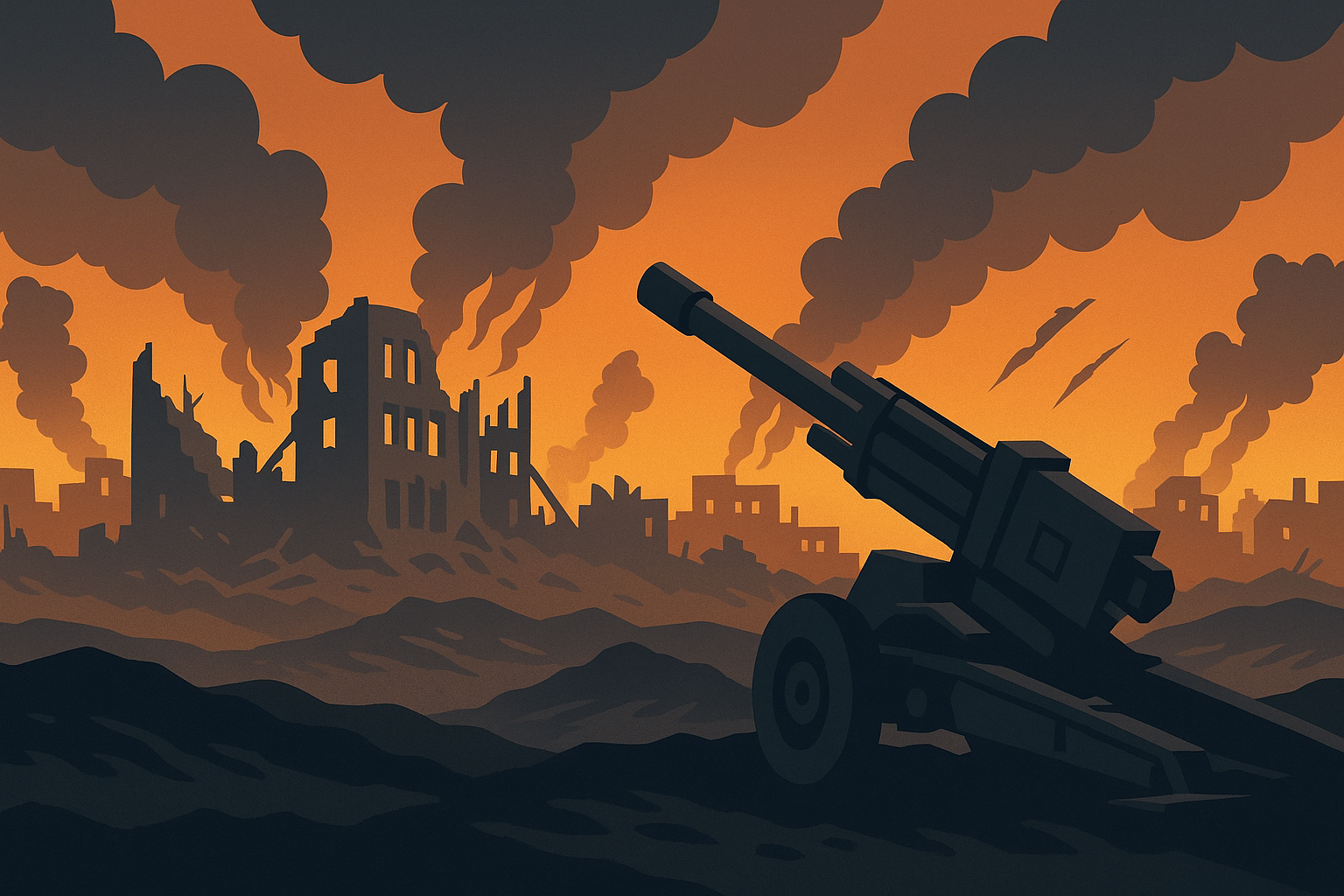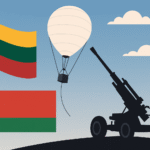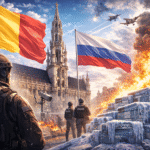Russia has stepped up its military offensive in eastern Ukraine, with parts of its forces entering the strategic city of Pokrovsk, amid faltering international efforts to broker peace.
The Ukrainian military acknowledged that around 200 Russian troops had penetrated the city, sparking fierce street battles. However, Kyiv denied Russian claims that thousands of its soldiers were surrounded, calling the assertions “a complete lie.”
President Volodymyr Zelenskyy said the situation was “difficult” but under control. “There is fierce fighting everywhere, including on the approaches to the city,” he said. “There are sabotage groups within Pokrovsk, and logistics are challenging.”
Pokrovsk, once a key logistical hub, lies in Ukraine’s Donetsk region, an area that Russian President Vladimir Putin has demanded be ceded as part of any ceasefire deal. Its capture would provide Moscow with a staging ground for further westward advances toward the heavily fortified Slovyansk-Kramatorsk-Druzhkivka line.
Slow Russian Gains and Fierce Resistance
For months, Russian forces have made incremental advances along the 1,000-kilometre frontline, pushing closer to key cities such as Lyman and Kostyantynivka. Military analysts say that despite the lack of a decisive breakthrough, Moscow is applying consistent pressure, forcing Ukraine to stretch its already strained defences.
Ukrainian forces have managed counterattacks north of Pokrovsk, reportedly retaking three villages, according to the monitoring group DeepState. These areas had been briefly lost following a surprise Russian offensive in early August that triggered urgent reinforcements to prevent a collapse of Ukrainian lines.
Yet the situation around Pokrovsk has deteriorated in recent weeks, with small Russian assault units — often 3 to 5 soldiers each — infiltrating through weakly defended positions and establishing footholds in the city’s southern districts.
Military analyst Kostyantyn Mashovets, from the Information Resistance group, said there was “no basis” to claim Ukrainian forces were surrounded, but warned that “the threat is very real.” He described the Russian approach as “chaotic,” relying on sabotage and infiltration rather than full-scale assaults.
Tactical Shifts and Heavy Fighting
Ukrainian serviceman Stanislav Bunyatov described the fighting in Pokrovsk as particularly brutal. “Russian infantry is constantly flanking our positions,” he wrote on social media, adding that heavy artillery fire and drone attacks were hampering evacuation and resupply efforts.
The use of explosive-laden drones by both sides has intensified, with strikes targeting supply convoys up to 20km behind the front lines. Ukrainian units, already suffering from manpower shortages, have struggled to plug defensive gaps along the southern part of the city, where Russian troops have been spotted south of the main railway line.
Further north, Russian forces have re-entered Kupiansk, a key railway hub in the Kharkiv region that Ukraine recaptured in 2022. Meanwhile, in the Dnipropetrovsk region, Russian units have begun pushing westward into areas previously untouched by the conflict, employing mechanised assaults instead of the smaller infantry tactics used earlier in the campaign.
Heavy Russian Losses Despite Advances
Despite these advances, the offensive has come at an enormous cost for Russia. Western intelligence estimates that Moscow has suffered up to one million casualties since the invasion began, including about 250,000 killed, according to British intelligence chief Richard Moore.
Analysts say that Russia’s ability to sustain such losses reflects its shift toward a war of attrition, prioritising numerical advantage and constant pressure over tactical precision.
As the fighting grinds on, Pokrovsk remains a symbol of Ukraine’s resilience — and a potential turning point. Its fate could determine whether Russia can continue its westward push through Donetsk or whether Ukraine can stabilise its defences long enough to regroup and counterattack.








